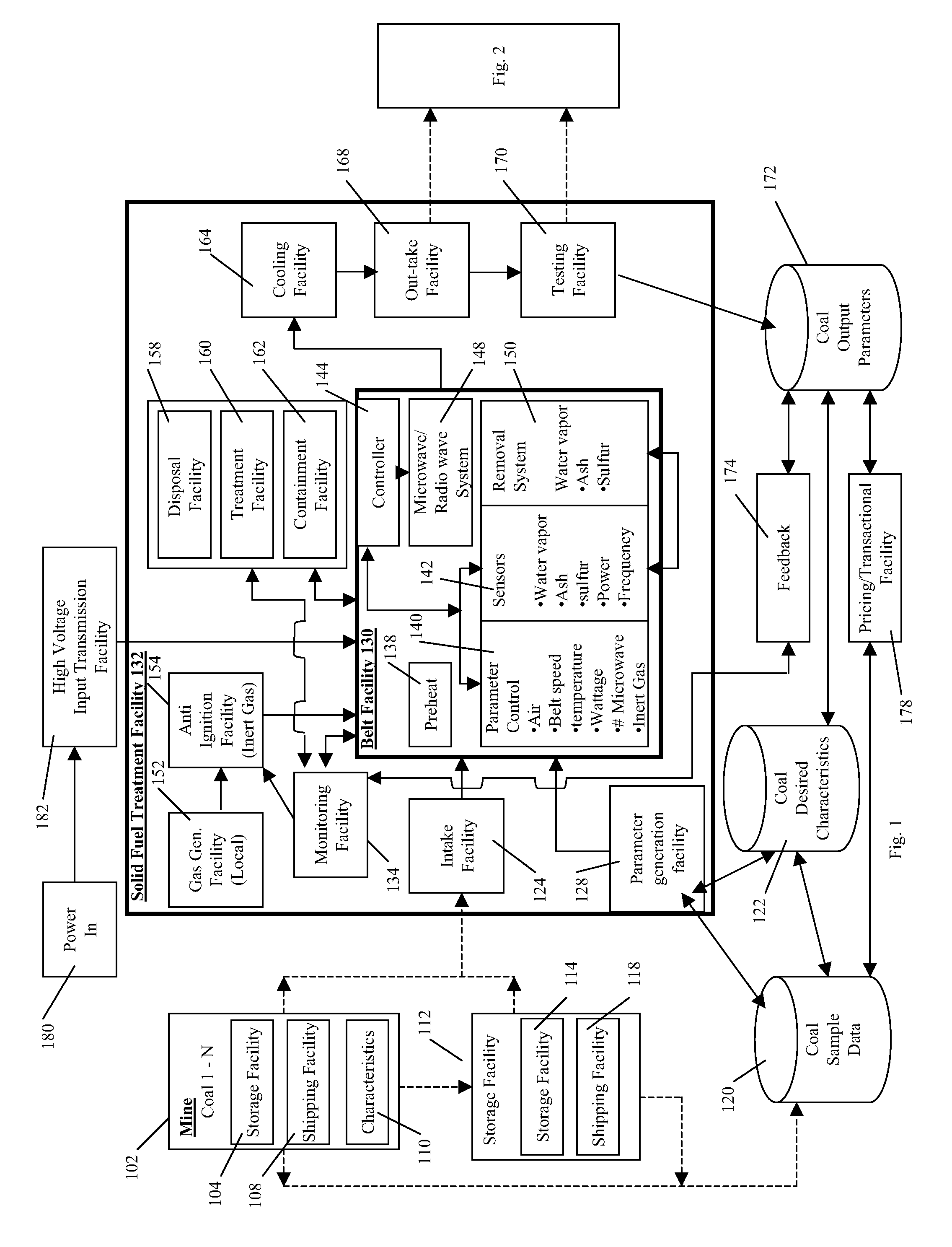Methods and systems for briquetting solid fuel
a solid fuel and briquetting technology, applied in the field of solid fuel treatment, can solve the problems of inorganic ash generation with elements of additional materials, inconsistencies in fuel burn parameters, contamination produced by burning process, etc., and achieve the effect of reducing the size, and reducing the size of solid fuel
- Summary
- Abstract
- Description
- Claims
- Application Information
AI Technical Summary
Benefits of technology
Problems solved by technology
Method used
Image
Examples
Embodiment Construction
[0158]Throughout this disclosure the phrase “such as” means “such as and without limitation.” Throughout this disclosure the phrase “for example” means “for example and without limitation.” Throughout this disclosure the phrase “in an example” means “in an example and without limitation.” Throughout this disclosure the phrase “in another example” means “in another example and without limitation.” Generally, any and all examples may be provided for the purpose of illustration and not limitation.
[0159]FIG. 1 illustrates aspects of the present invention that relate to a solid fuel treatment facility 132 using electromagnetic energy to remove products from a solid fuel by heating the products contained within the solid fuel to enhance the solid fuel properties. In an embodiment, the solid fuel treatment facility 132 may be used to treat any type of solid fuel, including, for example and without limitation, coal, coke, charcoal, peat, wood, briquettes, biomass, biodegradable waste, wood-...
PUM
| Property | Measurement | Unit |
|---|---|---|
| frequency | aaaaa | aaaaa |
| frequency | aaaaa | aaaaa |
| power | aaaaa | aaaaa |
Abstract
Description
Claims
Application Information
 Login to View More
Login to View More - R&D
- Intellectual Property
- Life Sciences
- Materials
- Tech Scout
- Unparalleled Data Quality
- Higher Quality Content
- 60% Fewer Hallucinations
Browse by: Latest US Patents, China's latest patents, Technical Efficacy Thesaurus, Application Domain, Technology Topic, Popular Technical Reports.
© 2025 PatSnap. All rights reserved.Legal|Privacy policy|Modern Slavery Act Transparency Statement|Sitemap|About US| Contact US: help@patsnap.com



